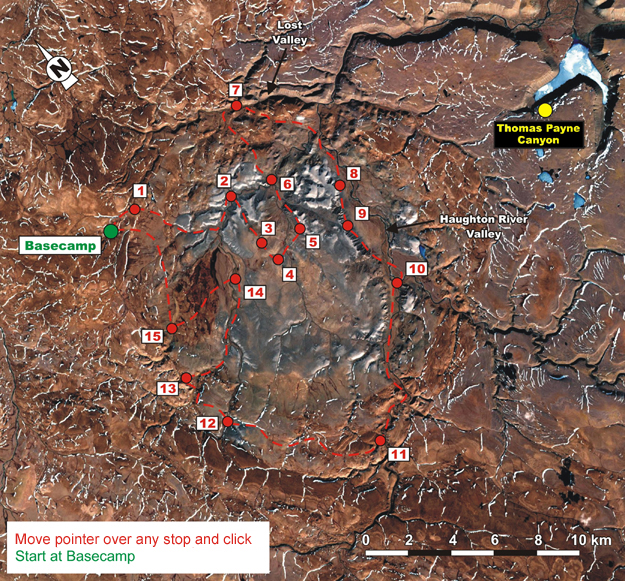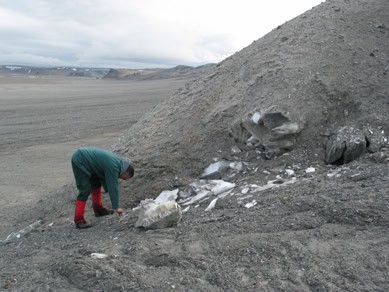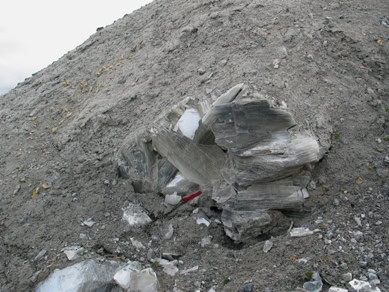
Explorer’s Guide to Impact Craters
Haughton Crater Tour
- Getting to Haughton Crater
- Virtual Tour of Haughton Crater
- Basecamp
- Thomas Payne Canyon
- Haughton – Stop 1
- Haughton – Stop 2
- Haughton – Stop 3
- Haughton – Stop 4
- Haughton – Stop 5
- Haughton – Stop 6
- Haughton – Stop 7
- Haughton – Stop 8
- Haughton – Stop 9
- Haughton – Stop 10
- Haughton – Stop 11
- Haughton – Stop 12
- Haughton – Stop 13
- Haughton – Stop 14
- Haughton – Stop 15
Stop 9 at Haughton

Selenite crystals in the impact melt breccia
Photo: G. Osinski, University of Western Ontario
Location: Along the Haughton River valley that eventually exits the structure to the north

A closer look at the melt breccias with selenite crystals
Photo: G. Osinski, University of Western Ontario
Geologist John Parnell inspects samples of selenite
At several locations within the impact melt breccias, you can see large deposits of transparent selenite (often called gypsum) crystals. These crystals formed during a period of hydrothermal activity, which occurred shortly after the Haughton impact event. Hydrothermal systems that are active today, such as the one found at Yellowstone National Park in Wyoming, are typically associated with volcanically active regions on Earth. However, impact craters can also provide two of the most important components of a hydrothermal system – heat and water.
Click here to learn more about hydrothermal activity associated with impact craters.
